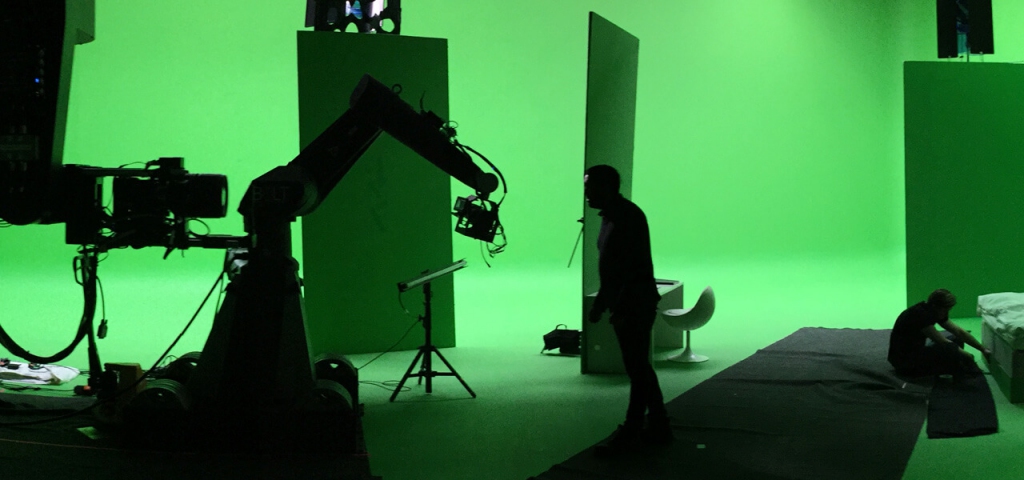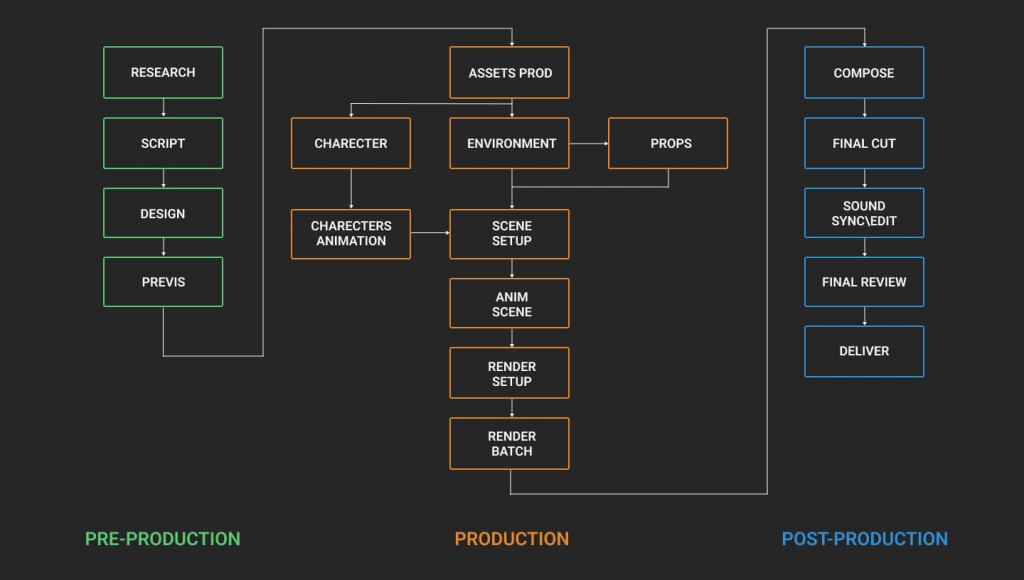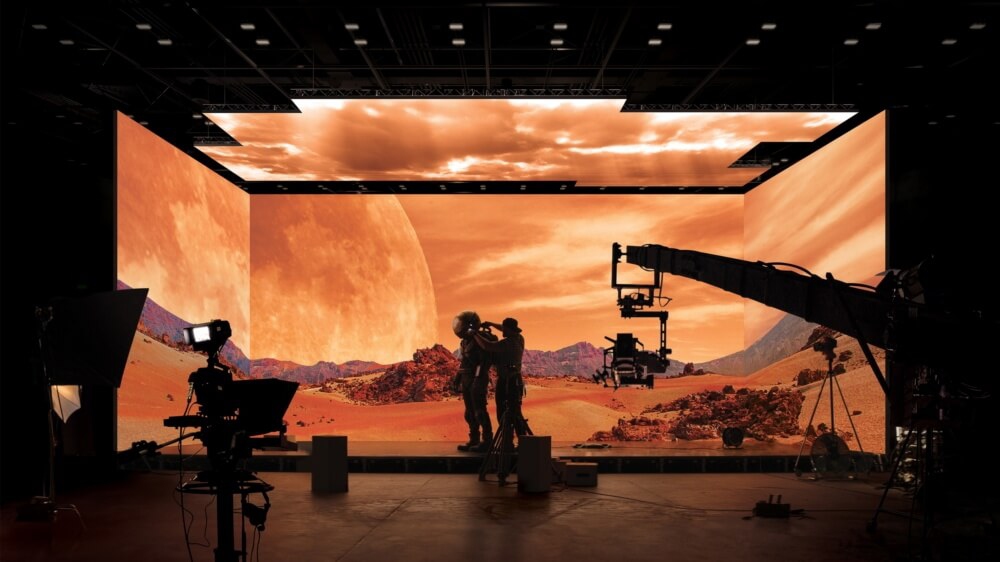Creating a movie with VFX is a complicated process. It can’t be achieved singlehandedly, with projects generally being managed by what is known as a VFX Pipeline. These pipelines vary depending on the type of VFX project, but we have put together the following guide on how VFX pipelines and workflows generally work.
VFX Pipeline and Workflow: Pro Tips

By the end of this guide, you should have a much better idea of what VFX pipelines and workflows are, how they work and how to create them. Furthermore, we will be providing you with our top pro tips for a successful VFX workflow. Read on to find out more!
What are VFX Pipelines and VFX Workflows?
Any complex project in every industry will have what is known as a workflow. This is essentially a sequence of tasks and activities that make up a formula for success, orchestrated in a way that can be repeated to provide consistent results.
However, organizing this workflow is not a simple task-it requires expertise in every individual step of the process, and this is managed by a pipeline. Specifically, a VFX pipeline is a team of people that help to organize individuals and departments required for each step of a VFX workflow, ensuring that expertise is available whenever necessary and thus ensuring that a VFX production can move forward in an organized manner.
How Does it Work?
VFX pipelines are generally managed and organized by a VFX pipeline supervisor. However, this does not mean that you do not need to be aware of how the pipeline works. A VFX pipeline concerns every element of a VFX production from the pre-production to the post-production, so you will need to keep yourself informed regarding each of these stages to produce high-quality work.
It's a common misconception that you only need to be involved in your stage of expertise, and that the VFX pipeline supervisor will simply contact you when they are ready for you to do your bit. This is simply not the case. Regardless of what you specialize in, you will be expected to complete work for every step of the pipeline, even if it is just being aware of what your teammates are working on.
Not being aware of this can have a serious domino effect on the rest of the pipeline. If work isn’t completed for each step, it’s highly likely that the VFX pipeline supervisor will send your work back and ask you to complete changes. This slows down the process and delays the work of other teammates, so it's always best to keep on top of each step from the beginning.
To illustrate this point further, take a look at the following VFX pipeline diagram. It will show you that the process is not linear, and requires excellent communication and collaboration.

How to Create a VFX Pipeline?
If you are managing a VFX production, it is going to be essential that you set up a VFX pipeline in order to ensure the project can be completed to the optimum standard. It may sound complicated, and you may wish to hire somebody experienced in pipeline management. However, the process can be broken down into three main steps.
First, you will need to consider how many stages your VFX pipeline will consist of. You will need to create a plan and hire at least one person for each stage, and ensure that you have a clear vision of how you will optimize the efficiency of the pipeline.
Once you have your team together, communication is key. As I mentioned earlier, it’s a common misconception that one must only concern themselves with their own expertise within a VFX pipeline. You will need to communicate with your team that this is not the case, and set clear instructions and online portals to facilitate steady communication and teamwork within your pipeline.
Finally, it will ultimately be your job to ensure everything is running smoothly. If you completed the previous step correctly, your VFX team should work and communicate together, making this final step easier. However, this does not mean that you should be idle. You instead should watch over every stage of the pipeline, communicate with team members for feedback on how the pipeline is working, and ultimately ensure that everything is running smoothly. VFX pipeline software can help you contain all of these tasks within a single software framework, you’ll thank us later!
Pipeline Stages
A VFX pipeline can be broken down into three stages and twelve sub-stages. Firstly, let's take a look at the macro stages. First, you will have the pre-production team - this will concern the conception of the VFX production, the scriptwriting, casting, budgeting, and other essential preparation work.
Second is the production of the VFX movie itself. This will consist of organizing camera crews, actors, and logistics, ensuring that all shots take place smoothly with consideration of the next step, post-production.

This third step is most important to a visual effects producer. Post-production is where visual effects are applied to the shots filmed during production when color grading takes place, and when soundtracks and SFX are applied. Once this step is complete, the VFX production should be ready for release.
Whilst these three macro stages represent a VFX production pipeline from conception to release, it is much more complex than this. There are sub-stages for each macro stage, and you will need a department for each of these within any VFX pipeline. Take a look at the following table, it illustrates the individual details of a VFX pipeline in more detail.
|
Pre-Production |
Story Boarding |
A team of artists will sketch out the scenes of the production to define the framing and subject motion shot-by-shot |
|
Pre-Vis |
Similarly to storyboarding, a VFX team will create low-resolution computer-generated sketches of each VFX scene | |
|
Conceptual Art and Design |
A team of artists will create a detailed artwork that defines small details that will contribute to the style of production, such as costumes, props, color schemes, and environment | |
|
Production Design |
A VFX team will create a 3D camera that will match the motion of a subject to the footage during production. | |
|
Asset Creation |
VFX artists will create 3D models (also known as assets) in preparation for them to be complement shots in the form of major CGI subjects or minor environmental details. | |
|
R&D (Research and Development) |
VFX Supervisors will liaise directly with the movie director in order to develop plans for how VFX will be used to achieve each scene | |
|
Production |
Filming Process |
The movie crew, actors, and director will work together to produce the majority of the movie, taking steps to facilitate the later VFX process |
|
Post Production |
Rigging |
A VFX team will work together to create a 'digital skeleton' which provides the physics and movement mechanisms for VFX subjects to be animated. |
|
Animation |
A team of animators will use digital software to combine the 3D assets and digital skeletons to bring VFX subjects to life | |
|
FX Production |
VFX background elements such as weather, explosions, lighting, and destruction will be simulated for each scene in which it is necessary | |
|
Lighting |
A VFX team will manually edit the lighting of each scene to ensure that all VFX elements blend together smoothly | |
|
Rendering and Compositing |
A VFX team will work on the final stages of the post-production, such as rendering the completed VFX elements, color grading, and compositing. |
Pro Tips for a Successful VFX Workflow
Hopefully, the resources provided within this guide have given you a great idea of what to expect when it comes to working with VFX pipelines. To finish things off, we at FRENDER have put together the following five pro tips for a successful VFX Workflow:
Tip 1: If you are creating your own VFX pipeline, converse with fellow VFX supervisors, asking them about obstacles they have faced and how they overcame them.
Tip 2: Always plan ahead – nothing will stunt the workflow of a VFX production as much as a pipeline that has not been thought out sufficiently.
Tip 3: Communication is key! If clear workflow standards are set out between different teams, the pipeline will take care of the rest.
Tip 4: Don’t be afraid to send back work (or be told to edit your work). This is all part of the VFX workflow, and it will ensure that your work will be of the highest standard.
Tip 5: Finally, always encourage collaboration within different departments. Stress that the pipeline is not a linear process, and all team members must be aware of the happenings in each department.
Conclusion
Well, that brings us to the end of our guide on VFX Pipeline and Workflow. It’s easy for VFX producers to get stuck in their own comfort zones no matter what they specialize in, and this is exactly why pipelines exist – to ensure everything comes together smoothly. We hope this article has helped, now get out there and encourage the rest of your team to read this and understand the importance of an optimized VFX workflow!




